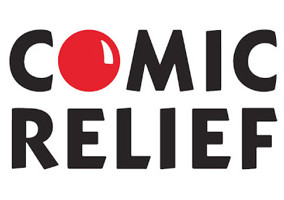Richard Weaver offers some tips for independent schools about reporting on public benefit.
The Charity Commission’s public benefit test has been a topic of much debate, no less so than in the independent schools sector. And this year we have now received a report of the House of Lords Select Committee on Charities, which among other things called for enhanced public benefit and impact reporting by charities.
Particularly after the original public benefit guidance, there has been a tendency among some independent schools to throw the kitchen sink at this disclosure. Some schools have even gone as far as to calculate the potential savings to the Treasury. This always feels a little defensive, and in fact a lot of the other “benefit” disclosed, while being really good “stuff”, often does not align with the charitable objects and purposes of the individual school.
So let us take stock of the current situation. Let us capture the right information, in a form that is useful and report it in a sensible and constructive manner, without being defensive. Here are a series of steps which we hope will make the process more manageable.
What are your objects?
The first and most critical part of your duty to report on public benefit is to understand “what are your objects?” and “who are your beneficiaries?” You need to review and understand your governing document – make no assumptions here. Ensure that for every meeting of the board and sub-committees there is a clear understanding, and that decisions are made in furtherance of these objects.
This sounds obvious but how many trustees/governors have reviewed this document recently? If the objects do not align with the public benefit you intend to provide, or are too restrictive, then consider changing them.
What do you do in furtherance of those objects?
For most the answer is obvious: educate the students within the age group or location specified within the governing document. You are providing a direct public benefit to the students, parents and communities that they will later serve.
What is it that you provide as part of your ongoing activities?
As part of school life and the educational programme there may well be activities that you do that have a direct benefit to the wider public. Students may visit care homes, provide volunteering support and raise funds for local charities. These aspects of benefit are not directly attributed to the objects of the charity per se, but they form part of the ethos of the school and the engagement that it has within its educational reach, that provides a benefit to the wider public.
What is it that you do outside of the operation of the school that constitutes public benefit in line with your objects? This is the greyest of areas, and the one where we often see overdisclosure. Be careful here to capture those activities, access and support initiatives that align with your objects.
These are truly public benefit. Those other things that you do which are outside your objects are likely to be “good things to do” but may not contribute to the “public benefit”.
Some examples are:
- Provision of sports facilities to sports clubs with an age group allied to the schools objects – tick;
- Provision of sports facilities to clubs or associations that are outside any age restriction in the governing document – not public benefit;
- Provision of careers assistance to the local state school – tick;
- Teachers coming together with others in the state sector to learn from one another – tick;
- Providing bursary and other fee support to those unable to afford full fees – tick;
- Providing discounts to staff – this is not public benefit where it is a contractual right;
- Scholarships – if not awarded to those who can’t afford fees, these are arguably not considered to be part of public benefit.
So we need to understand what is and what is not contributing to the public benefit test and what information we need to gather. Each school should schedule the various types of benefit and assess each accordingly.
Collate and quantify the benefit provided
We can, in broad terms, categorise the different elements into separate headings. With these headings we can identify the equivalent cost whether it be an actual cost or a deemed cost. Other elements will not be financial, but can be captured in other ways such as the number of hours provided.
How do we now report on our public benefit?
Now having said that certain aspects may not count towards the public benefit test, it is still useful information that can be gathered and disclosed but in a different way.
We would recommend schools consider breaking down their public benefit statement into these key headings:
Education
Include here all of the educational achievements of the school. Do not be afraid to report cumulative figures for the number of students educated over a period of time. This emphasises the impact that the schools educational provision has provided and continues to provide.
Financial support
Include all of the usual financial support, bursaries and scholarships, although emphasis should be placed on means tested support. Also include other financial support such as subsidised access to facilities to other organisations that would contribute and align with your stated objects as a charity.
Community engagement
Include those wider community engagements that the school has with other organisations and the local community that either form part of the educational curriculum or contribute to the objectives of the school.
Engagement with the state sector
Include here involvement with other schools. It may be beneficial to break this down between engagement with state sector schools, academies and free schools and other educational bodies.
Wider community benefit
Here you can include a whole host of other benefits which, while they may not align with your objects, you feel are worthy of note.
Richard Weaver is a partner at haysmacintyre
Related articles












